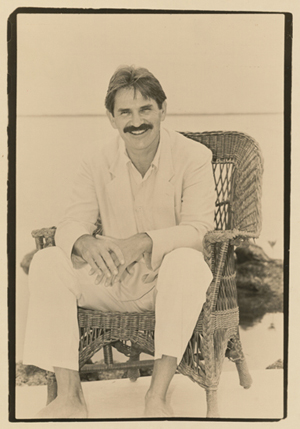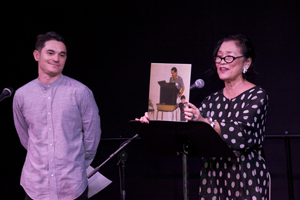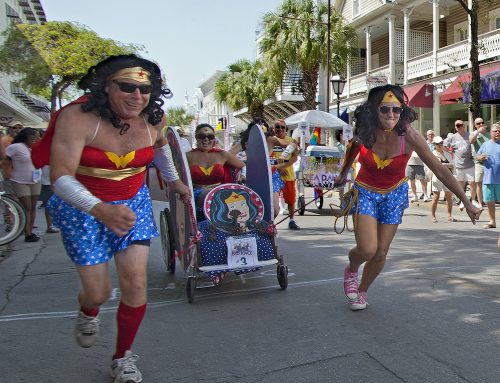He was a New York City–based advertising copywriter whose most famous product taglines were “Choosy mothers choose Jif” and “Take Ex-Lax tonight and have a good day tomorrow” … a novelist whose books included “Six Months with an Older Woman,” which was made into a film starring John Ritter … and a longtime Key West resident who created a walking tour chronicling the island’s heritage as a writers’ haven.
But David Kaufelt’s greatest accomplishment — and the one that made perhaps the most lasting impact — was founding the superb and critically acclaimed Key West Literary Seminar.

David Kaufelt was well known for his wit, creativity and passion for Key West’s literary heritage. (Photo courtesy of the Key West Literary Seminar)
In early February, more than 200 people gathered at The Studios of Key West to celebrate David’s life and legacy by dedicating a new national literary landmark in his honor.
The landmark will be installed at Key West’s public library — an ideal spot, since that’s where David (who died in 2014 after spending 40 years on the island) led the inaugural seminar in 1983.
It’s not Key West’s first national literary landmark. Literary landmark designation is conferred by United for Libraries, a division of the American Library Association, and David’s is the ninth in the island city. Others mark distinguished spots including the former homes of author Ernest Hemingway, playwright Tennessee Williams and poet Elizabeth Bishop.
But while those world-renowned figures loomed large in Key West’s past literary culture, David Kaufelt played a huge role in making sure that culture would remain vibrant and relevant in the present and the future.
“Key West had a literary heritage long before David came along — but before David arrived, Key West would never have been described as a place with a literary culture that colored everyday life,” said Arlo Haskell, executive director of the seminar that brings leading national and international writers to the island each January.
“David took the heritage and history of Key West and reinvigorated it as a living story,” Arlo said. “He made it so that great literature and important writers are as central to Key West’s identity as sunsets and conch houses.”

Jackson and Lynn Kaufelt recall David Kaufelt at the literary landmark dedication. (Photo by Carol Tedesco, Florida Keys News Bureau)
A good part of that reinvigoration came about through the Key West Literary Seminar, which will celebrate its 35th year in 2017. The seminar is an amazing experience for readers, aspiring writers, and people who are passionate about good writing.
Each January it stars a roster of world-class authors who read their work and share their insights before a group of spellbound attendees. In past years, it has featured literary superstars including Frank McCourt, Amy Tan, Joyce Carol Oates, Gore Vidal, Thomas McGuane, Ann Beattie, Junot Diaz, Peter Matthiessen, Pico Iyer and Joseph Heller.
Each year’s program includes lectures, panel discussions, book signings and receptions where attendees and authors can mingle in intimate, historic Key West settings. It’s a fascinating four days of immersion in inspiration — and back in the early 1980s, David Kaufelt envisioned what it could become.
David’s wife of 37 years, Lynn Kaufelt, is a guiding force on the seminar’s board of directors. At the landmark dedication, she described her late husband as “a larger-than-life personality who flourished in the sun and the offbeat company of the people of our island.”

A version of David Kaufelt’s “Peter Pan theory” is inscribed on one side of the literary landmark honoring him.
Many years ago, David Kaufelt offered a theory on why Key West had such a reputation as a writer’s haven. He called it the Peter Pan theory.
“Freud said we’re at our most creative in our first five years, and we can be like children here: five years old, swimming in pools, riding around on our bicycles, living a childlike life — living and writing out our fantasies,” he said.
Fittingly, a version of that theory is inscribed on the back of the bronze literary landmark.





